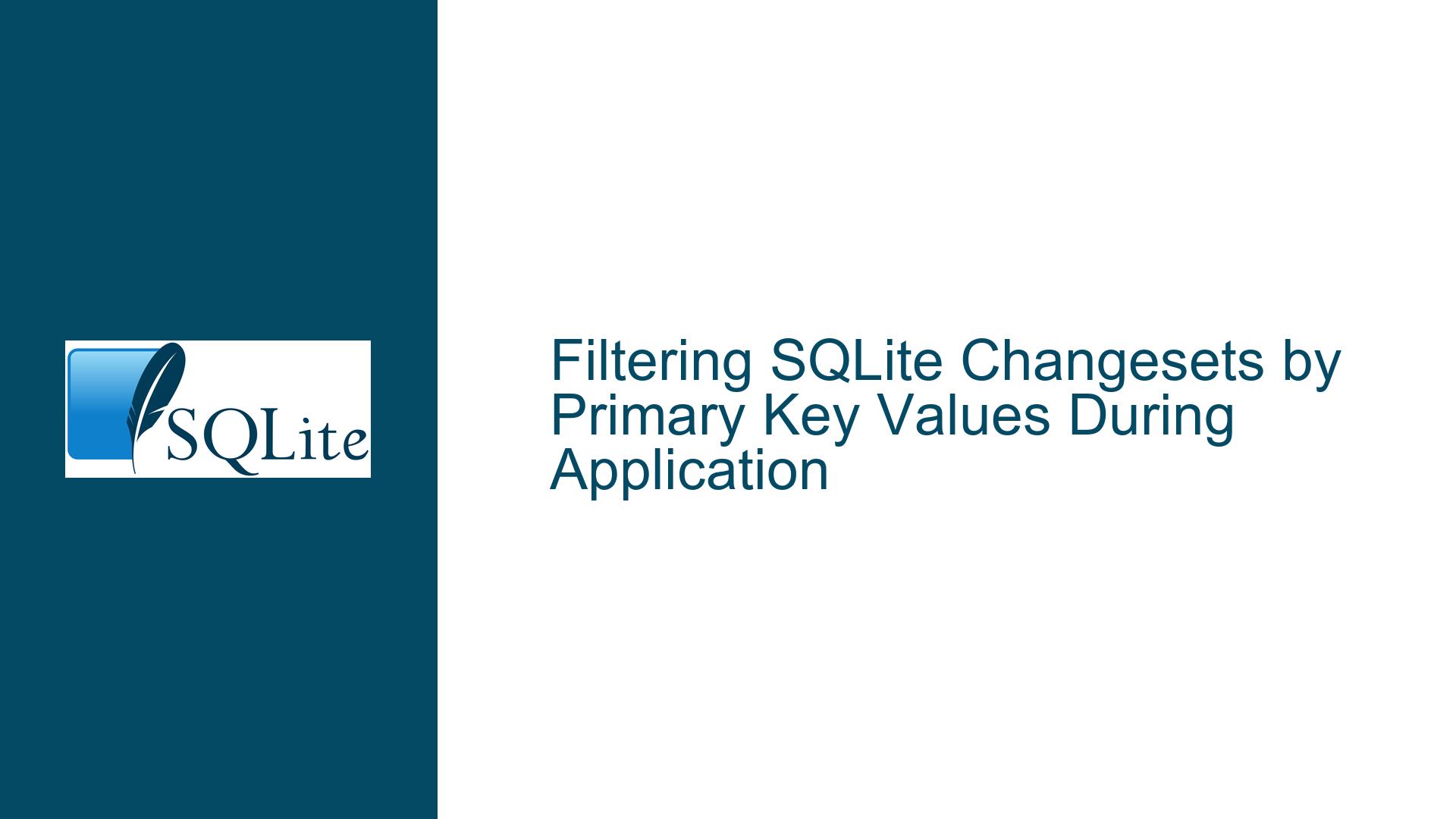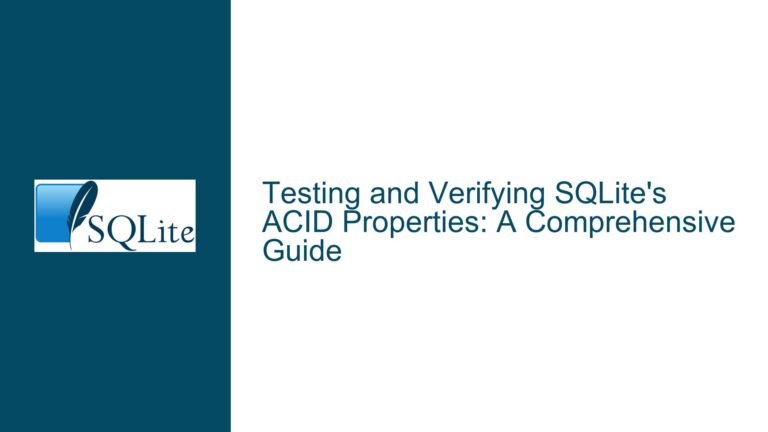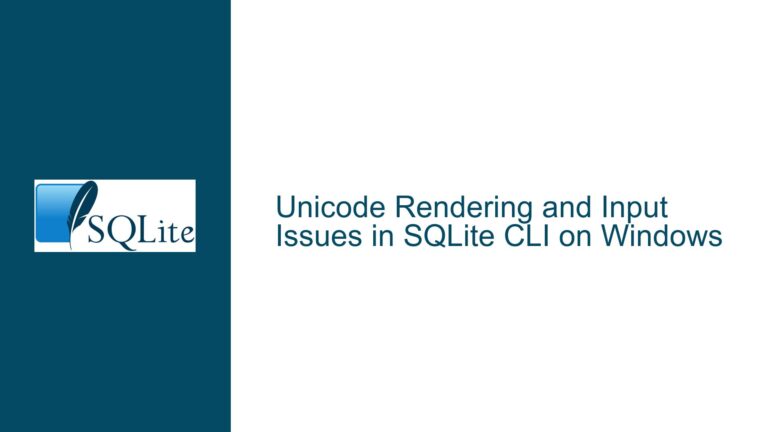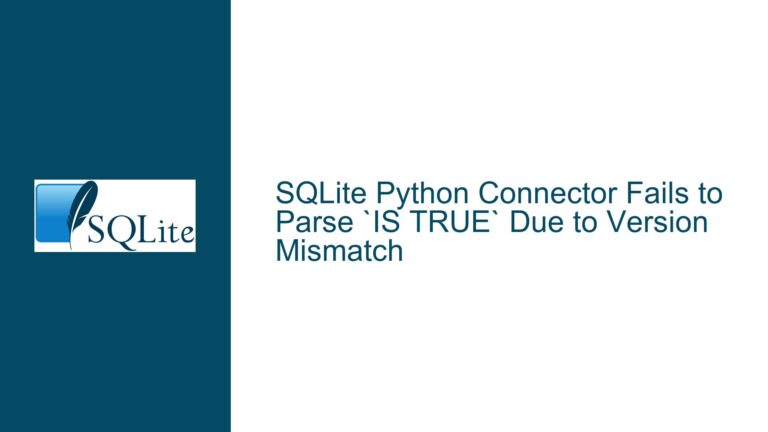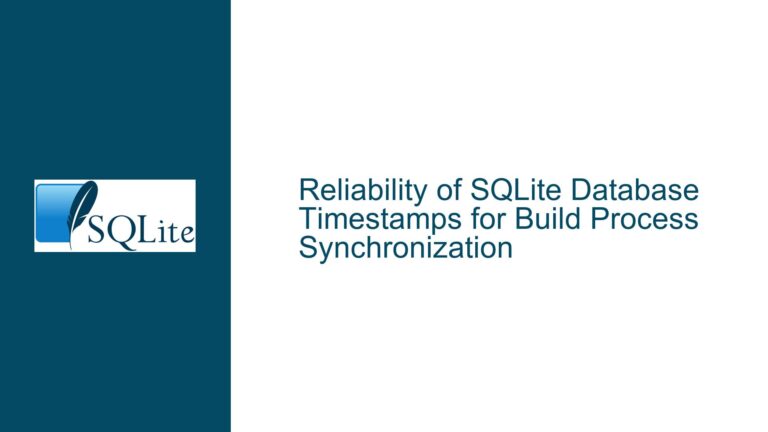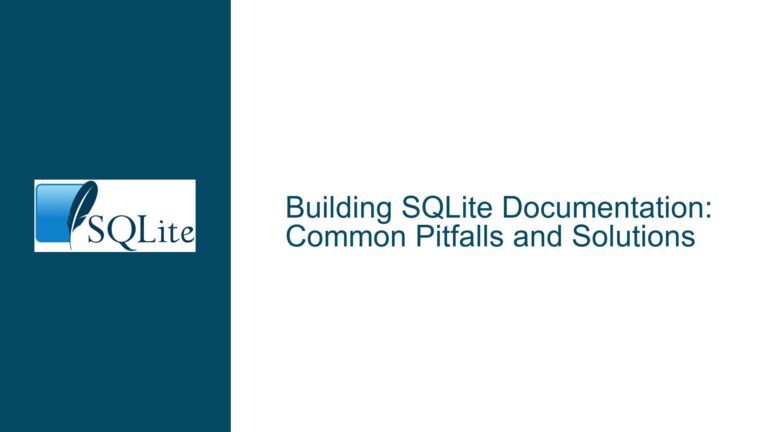Filtering SQLite Changesets by Primary Key Values During Application
Understanding the Core Challenge of Selective Primary Key Filtering in SQLite Changesets
The ability to filter changeset content based on specific primary key values represents a critical requirement for controlled data synchronization in SQLite. When working with the SQLite Session Extension, developers often need to apply partial changesets containing only specific rows while excluding others. This need arises in scenarios like incremental updates, multi-tenant systems, or distributed databases where granular control over data propagation is essential.
At its core, this challenge involves three interconnected components:
- The structure of SQLite changesets as binary blobs containing table change operations
- The primary key identification system governing row uniqueness
- The session extension’s API constraints regarding changeset modification
A changeset contains serialized records of INSERT, UPDATE, and DELETE operations for tracked tables. Each record includes the affected row’s primary key values, old values (for updates/deletes), and new values (for inserts/updates). The session extension provides mechanisms to generate and apply these changesets but lacks built-in filtering capabilities at the row level.
Critical Limitations in Native Changeset Handling Architecture
The fundamental obstacle stems from SQLite’s design philosophy favoring simplicity over complex data transformation capabilities within its core components. The session extension operates under several constraints that directly impact filtering workflows:
- Immutable Changeset Structure: Once generated, changesets cannot be modified through official APIs
- All-or-Nothing Application: The sqlite3changeset_apply() function processes entire changesets without row-level filtering
- Conflict Resolution Limitations: Conflict handlers only activate when primary key collisions occur, not for general filtering
- Binary Encoding Complexity: Direct manipulation of changeset blobs requires deep understanding of their undocumented binary format
These architectural decisions ensure reliability and performance but create challenges for scenarios requiring partial changeset application. The absence of native filtering mechanisms forces developers to implement custom solutions outside SQLite’s standard functionality.
Comprehensive Strategy for Primary Key-Based Changeset Filtering
Phase 1: Changeset Iteration and Primary Key Extraction
Begin by initializing a changeset iterator to traverse all operations within the changeset. Use sqlite3changeset_start() with appropriate error handling to account for malformed input. For each operation retrieved via sqlite3changeset_next():
- Determine operation type using sqlite3changeset_op()
- Extract primary key components with sqlite3changeset_pk()
- Decode primary key values using column type information from sqlite3_table_column_metadata()
Example primary key extraction workflow:
sqlite3_changeset_iter *pIter;
sqlite3changeset_start(&pIter, nChangeset, pChangeset);
int rc;
while(SQLITE_ROW == (rc = sqlite3changeset_next(pIter))){
const char *zTab;
int nCol, opType, bIndirect;
sqlite3changeset_op(pIter, &zTab, &nCol, &opType, &bIndirect);
sqlite3_value *apPkVal[SQLITE_MAX_COLUMN];
int nPk;
sqlite3changeset_pk(pIter, apPkVal, &nPk);
/* Process primary key values here */
}
sqlite3changeset_finalize(pIter);
Phase 2: Dynamic Changeset Reconstruction with Filtering Logic
Implement a changegroup object to accumulate filtered operations. The sqlite3changegroup API provides mechanisms to aggregate changeset fragments while maintaining data integrity:
- Initialize changegroup with sqlite3changegroup_new()
- For each acceptable operation (based on primary key analysis), add to changegroup using sqlite3changegroup_add()
- Generate filtered changeset via sqlite3changegroup_output()
Critical considerations during reconstruction:
- Preserve operation ordering where dependencies exist between rows
- Handle composite primary keys with proper value concatenation
- Manage memory allocation for large changesets to prevent OOM errors
- Validate foreign key constraints post-filtering if applicable
Phase 3: Safe Application of Filtered Changesets
Apply the reconstructed changeset using enhanced conflict resolution:
void *pFiltered;
int nFiltered;
sqlite3changegroup_output(pGroup, &pFiltered, &nFiltered);
sqlite3changeset_apply_v2(
dbTarget,
nFiltered,
pFiltered,
0, /* xFilter */
conflict_handler,
0, /* pCtx */
changset_apply_flags
);
Implement comprehensive error handling:
- Checksum verification of filtered changeset
- Transaction rollback on partial application failures
- Schema validation against target database
- Atomic commit sequencing for multi-table changesets
Advanced Optimization Techniques
For high-performance implementations:
- Precompile primary key filter patterns using SQLite’s REGEXP extension
- Implement bloom filters for rapid key existence checks
- Utilize memory-mapped I/O for large changeset processing
- Parallelize iteration and filtering operations using worker threads
- Cache decoded primary key values for frequent filter patterns
Security Considerations
When implementing custom filtering:
- Validate all primary key values against expected data types
- Sanitize table names to prevent injection attacks
- Implement size limits on processed changesets
- Use cryptographic signatures for changeset authenticity
- Audit memory management to prevent buffer overflows
Cross-Platform Implementation Strategies
For non-C environments:
- Develop native extensions for Python/Ruby/Node.js using N-API
- Implement JNI wrappers for Java/Kotlin Android applications
- Create CLR bindings for .NET implementations
- Use WebAssembly compilation for browser-based solutions
Performance Benchmarking Methodology
Establish baseline metrics for:
- Changeset iteration speed (rows/sec)
- Primary key decoding throughput
- Changegroup reconstruction overhead
- Filtered application latency
- Memory consumption patterns
Optimize based on:
- Column store indexing for wide tables
- Column pruning for unnecessary data
- Compression algorithms for changeset storage
- Batch processing of multiple changesets
Alternative Approaches and When to Use Them
- Pre-Filtered Session Tracking: Attach session objects with WHERE clause filters during changeset generation
- Trigger-Based Filtering: Implement INSTEAD OF triggers on target tables
- Virtual Table Proxies: Intercept changes through intermediate virtual tables
- SQLite Run-Time Loadable Extensions: Develop custom C extensions for native filtering
Each approach carries specific trade-offs in complexity, performance, and maintenance overhead. The changeset reconstruction method provides maximum flexibility but requires significant implementation effort. Pre-filtered session tracking offers simplicity but limits dynamic filtering capabilities.
Debugging and Validation Procedures
Implement a changeset analysis toolkit:
- Hex dumper with annotated changeset structure
- Operation replay simulator
- Conformance checker against SQLITE_CHANGESETDATA_* constants
- Differential validator against source databases
- Fuzzing harness for robustness testing
Long-Term Maintenance Considerations
- Version control for filtering logic
- Schema change impact analysis
- Backward compatibility testing
- Automated regression test suites
- Documentation of custom binary formats
By implementing this comprehensive strategy, developers achieve fine-grained control over changeset application while maintaining SQLite’s reliability guarantees. The solution balances performance with flexibility, enabling complex data synchronization scenarios without modifying SQLite’s core engine.
